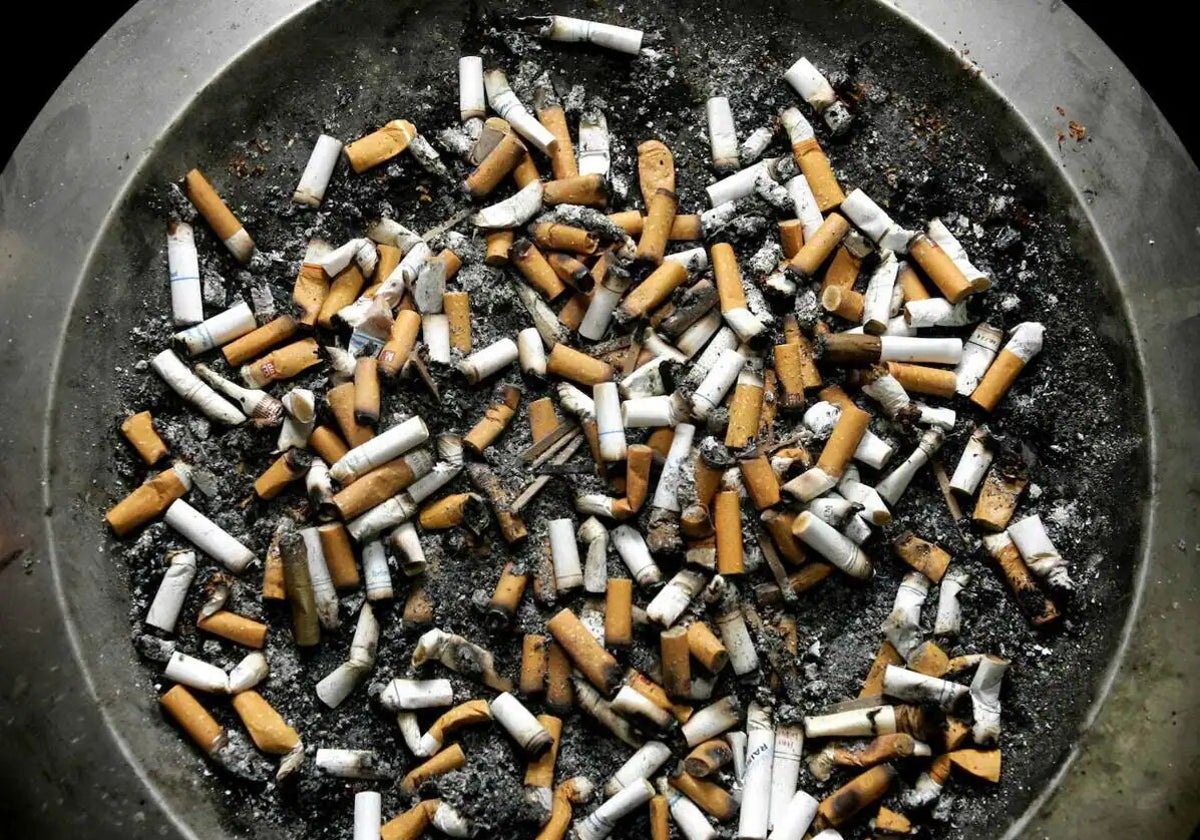Banned from selling cigarettes to those born after 2006: is anyone brave enough to impose the most radical anti-smoking measure in Spain?
The pioneer of the tobacco 'endgame' strategy was New Zealand with a law that was finally enacted in 2022. But a recent change of government has put an end to this measure
If you asked anyone at what age they would want their child to start smoking, what would they answer? This was the question the heads of a national anti-smoking organisation in Spain asked in a survey in which 5,000 members of the public took part. Among them were non-smokers as well as smokers and yet 97.5% answered: "Never".
This "never" contains at least two truisms: that no one today doubts the damage tobacco does to health, and that few, in good conscience, want young people to become addicted. But how can this desire be made a reality? Are governments capable of putting a stop to this habit which, in Spain, affects almost 20% of the population and claims the lives of some 55,000 people every year?
Now that the ministry of health has resumed negotiations with the regional governments for the renewal of its plan for the prevention and control of smoking 2024-2027 (PIT), the ambitious idea of banning cigarettes among the first generation is back in the public debate.
There are radical ways to achieve this, such as the so-called tobacco 'endgame', a strategy of banning the sale of tobacco to those born after a date set by authorities.
What is the 'endgame' strategy?
The pioneer was New Zealand, which banned smoke for those born after the year 2009 - the law was widely debated for years and finally enacted in 2022. A recent change of government has put an end to this measure, which now consists of making access to cigarettes more difficult by limiting sales outlets, but not banning them outright.
After that first resounding first attempt, Brookline, a town in the US state of Massachusetts, now leads the smoke-free generation front after banning the purchase of tobacco and vaping products for those born on or after 1 January 2000, from the year 2021.
Would such a strategy fly here in Spain? Activists proclaim yes, doctors hope and scientific societies list a long list of steps that can be taken before implementing such a ban by law
First, it is necessary to analyse the context. This strategy seeks, not to control the epidemic, but to eradicate it. Here, eradication means reducing the smoking population to less than 5% from 20%.
"It fits in societies with a consumption of less than 15% of the population, which is not the case in Spain
To implement such measures by law, experts believe there must be significant social support. "Its application makes sense in countries where the prevalence of tobacco consumption is less than 15% or where very rapid decreases in prevalence are observed. This is not the case in Spain," said Mónica Pérez, coordinator of the Working Group on Tobacco of the Spanish Society of Epidemiology (SEE).
If the social scenario is not appropriate, neither is the legislative framework, in the opinion of Dr Francisco Pascual, president of the national committee for the Prevention of Smoking (CNPT). "As a doctor and citizen, I think it is a good measure because it would finally reduce tobacco consumption, but I am ambivalent about the fact that it is difficult to fit it into legislation and I think it clashes with the freedom of adults to choose," he said.
Does it fit in legislation?
This last argument is the one put forward by regions such as Castilla y León when it comes to assessing the anti-smoking roadmap measures proposed by the minister, Mónica García. They will support measures that do not directly infringe on individual freedom, they said hours before the scheduled meeting with the minister.
Pascual pointed out that he sees "it is more important to insist on information, prevention and awareness campaigns so that people become aware of the risks and the damage, rather than such a strict prohibition".
"The most effective thing to do is to raise the price; for every 5% increase, consumption decreases by 10%"
The organisation Nofumadores.org is very clear on this point. "Yes, it is possible. Laws are made and can be changed," said Raquel Fernández, spokesperson for the anti-smoking activist association, which was one of the first to request a change in the law to implement the 'endgame' strategy in Spain.
In Fernández's opinion, the New Zealand case is paradigmatic when it comes to explaining why this type of more radical measures do not spread. "Politicians apply policies with a short-term vision. And they are more interested in collecting taxes on tobacco than in eradicating it, when in fact it has been proven that health and social spending on tobacco is three times higher than the revenue from these taxes," she said.
The first tobacco-free generation in 2040?
The confidence that, as Pascual said, people are more aware of the harm caused by smoking is not something that, in Fernández's opinion, has proven to be effective. "Awareness-raising in many respects is important, but self-control has been proven not to work," she added.
For this activist organisation, the 'endgame' strategy seeks to progressively stop tobacco from being normalised in society. "The aim is not to persecute consumption, but to put an end to the sale of tobacco," they said.
In an unfavourable environment for the 'endgame', such as the one in our country, how would we reach the goal set by Europe and by the government to achieve the first smoke-free generation in 2040?
On this point, there is an almost general consensus among the organisations involved in the matter on the need to raise the price of tobacco. The president for the National Commission for Tobacco Control said this would be the "easiest, most effective and most likely to generate consensus".
More expensive and more difficult to locate
He pointed out that by only raising the final price by 5%, tobacco consumption could be reduced by 10%. Family doctors recently expressed their opinion along these lines, calling for the involvement of the ministry of finance so this measure could be implemented.
The Society for Epidemiology supports the measure to increase the price by raising taxes, but also calls for effective control measures. Francisco Pascual said that Zapatero's anti-smoking law still has a long way to go in its application. He pointed out, for example, the surroundings of hospitals, schools or children's playgrounds where, in theory, smoking is prohibited. "We have relaxed; we are very lax in our compliance. We have stopped the control," he said. Mónica Pérez echoed Pascual's thoughts.
"Yes it is possible; laws are made by men and self-policing has proven not to work"
Reducing points of sale, encouraging quitting, or even, as in countries such as the United States, raising the age from which tobacco can be purchased (21 years in the case of the US), would be among other effective measures to achieve a 5% reduction in the smoking population by 2040.
This should go hand in hand with primary prevention measures targeting young people, as health education on smoking still seems to be an unfinished business. Vaping, which stands as the gateway to addiction for many minors, is the other issue now being discussed.
Access to tobacco (not vaping) for minors in Spain is at the age of 11. "Something has to be done about this," the CNPT said. Nofumadores.org proposes inspections and tough sanctions, up to the closure of the business, for those tobacconists who do not ask for ID cards, for example.
The Society for Epidemiology adds to the list the reduction of outlets by restricting sales to tobacco outlets, which would remove from the map, for example, vending machines in entertainment venues. However, limiting access and the presence of tobacco in society would, in the long term, lead to an entire generation unfamiliar with smoking and thus smoke-free.

How much harm does environmental tobacco smoke do?
Exposure to environmental tobacco smoke (ETS) has a clear impact on the health of the population. In Spain, a study published in Archivos de Bronconeumología estimates that exposure to environmental tobacco smoke causes approximately 700 deaths per year in the population, of which 60% occur in non-smokers. Exposure to ETS increases the risk of lung cancer, ischaemic heart disease, and recent meta-analyses associate exposure with COPD and lower respiratory tract infections. In children it is associated with increased risk of sudden infant death or increased risk of otitis.

